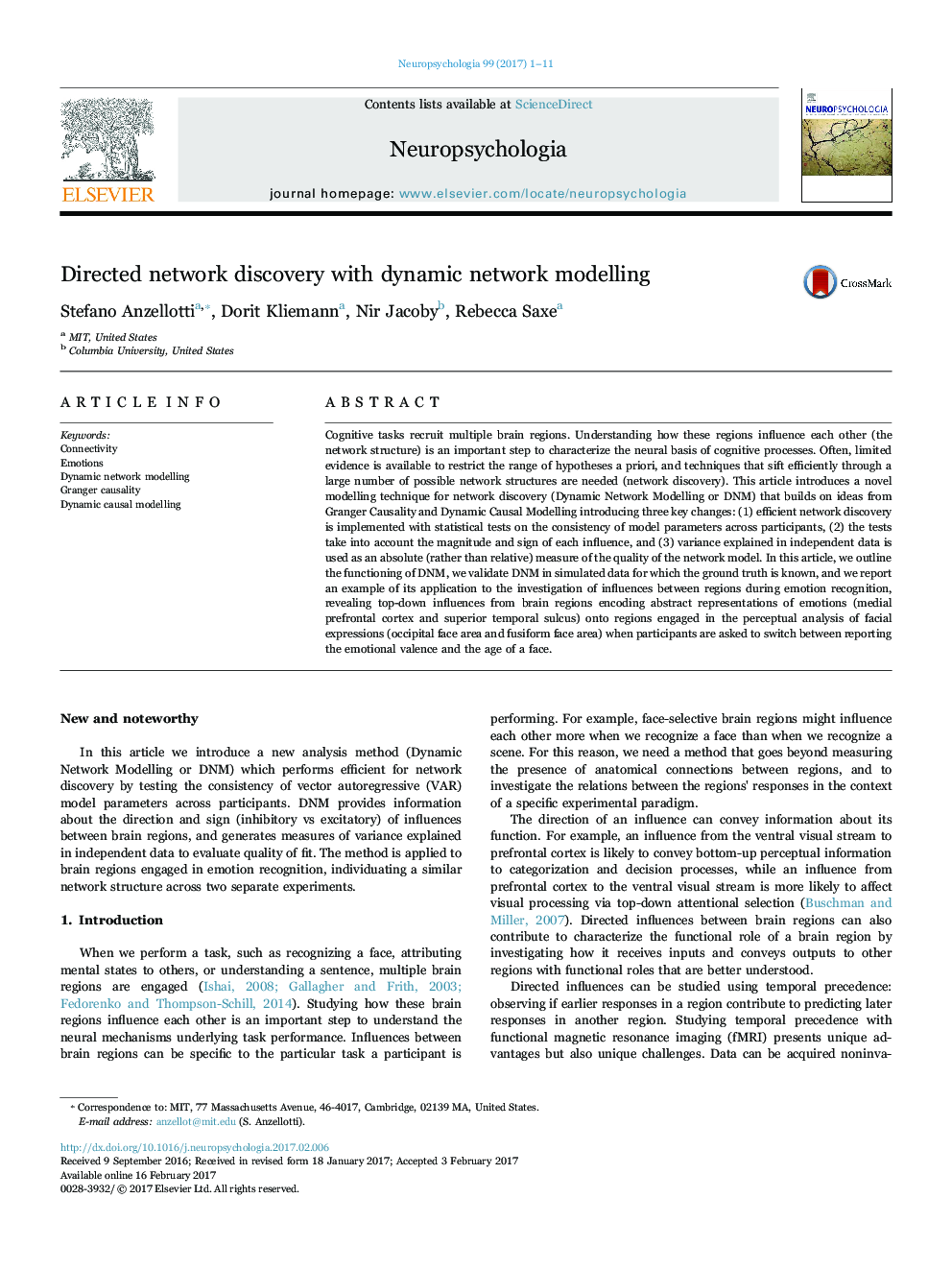| کد مقاله | کد نشریه | سال انتشار | مقاله انگلیسی | نسخه تمام متن |
|---|---|---|---|---|
| 5045208 | 1475556 | 2017 | 11 صفحه PDF | دانلود رایگان |
- We introduce Dynamic Network Modelling (DNM), a technique for exploratory analysis of the influences between brain regions.
- With a set of simulations, we show that DNM can accurately infer the presence and sign of influences between regions.
- We show that DNM, but not Granger Causality, can detect inconsistency in the sign of influences across participants.
- We analyze data from two experiments with DNM, showing that flexible extraction of different kinds of information from faces (age vs emotional valence) engages top-down influences from brain regions encoding abstract representations of emotions (medial prefrontal cortex and superior temporal sulcus) to the fusiform face area.
Cognitive tasks recruit multiple brain regions. Understanding how these regions influence each other (the network structure) is an important step to characterize the neural basis of cognitive processes. Often, limited evidence is available to restrict the range of hypotheses a priori, and techniques that sift efficiently through a large number of possible network structures are needed (network discovery). This article introduces a novel modelling technique for network discovery (Dynamic Network Modelling or DNM) that builds on ideas from Granger Causality and Dynamic Causal Modelling introducing three key changes: (1) efficient network discovery is implemented with statistical tests on the consistency of model parameters across participants, (2) the tests take into account the magnitude and sign of each influence, and (3) variance explained in independent data is used as an absolute (rather than relative) measure of the quality of the network model. In this article, we outline the functioning of DNM, we validate DNM in simulated data for which the ground truth is known, and we report an example of its application to the investigation of influences between regions during emotion recognition, revealing top-down influences from brain regions encoding abstract representations of emotions (medial prefrontal cortex and superior temporal sulcus) onto regions engaged in the perceptual analysis of facial expressions (occipital face area and fusiform face area) when participants are asked to switch between reporting the emotional valence and the age of a face.
Journal: Neuropsychologia - Volume 99, May 2017, Pages 1-11
